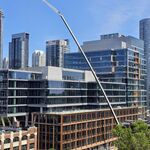MisterF
Senior Member
^That 20,000 number will go down and the 400 will go up. The way we build our streets has a big impact on how people use them, as has been shown with other similar projects.
In any case, I'm not sure what these observations are trying to prove exactly. It takes time for people's habits to respond to infrastructure changes. It doesn't happen overnight or even in a single year. And a single street having cycle tracks isn't going to get the same results as an interconnected network. The current cycling numbers are just the beginning.
In any case, I'm not sure what these observations are trying to prove exactly. It takes time for people's habits to respond to infrastructure changes. It doesn't happen overnight or even in a single year. And a single street having cycle tracks isn't going to get the same results as an interconnected network. The current cycling numbers are just the beginning.
Last edited:




